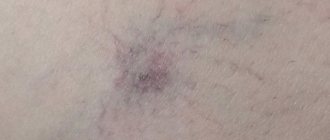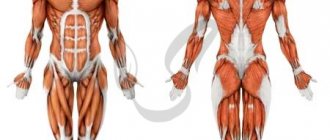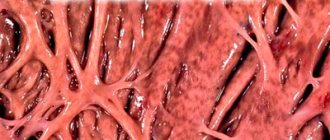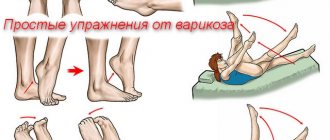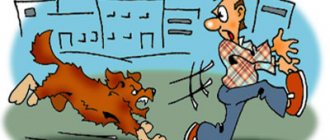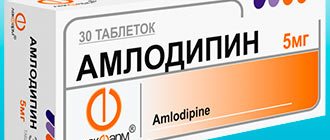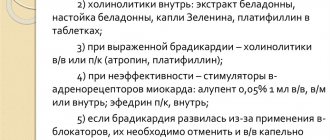Under ideal conditions, a person’s heart would not stop suddenly, abruptly, due to illness, long before old age. Studies of centenarians in different countries show that, of all the body organs, the heart should be one of the last to fail.
Science has proven that its safety margin can last at least 120 years.
In fact, this ingenious pump with its blood supply, nerves, and electrical potential fails before reaching half of the time programmed by nature.
How to strengthen the heart muscle in the real world, full of temptations, cheeseburgers and cakes, computer games and television series, beautiful cars? We tried to collect practical advice and present scientific findings in accessible language.
What are the main “enemies” of the heart you will have to fight?
Knowing the enemy by sight makes it easier to deal with him. The most significant factors damaging the myocardium of the heart are:
- accumulation of excess weight;
- high cholesterol (low-density lipoprotein);
- hypertension;
- chronic inflammation;
- metabolic disorders;
- stress.
In theory, strengthening your heart muscle by adopting a healthy lifestyle is simple. This means:
- smile rather than get angry when faced with troubles;
- eat an apple, not an apple pie;
- drink green tea while watching news on TV, and not eat chips;
- in the morning, while waiting for the kettle to boil, spend 5 minutes doing stretching exercises;
- try to meditate for those few seconds while the computer boots.
Let's combine theoretical knowledge with practical actions.
Why does the heart need help when playing sports?
When determining the permissible load based on heart rate, only the gender and age of a person are usually taken into account, without taking into account the individual characteristics of the body. If, for example, you have never trained seriously, then loads, even at an acceptable heart rate, can cause oxygen starvation in the myocardium.
It will not be difficult to increase your heart rate to the maximum, but staying at this figure for 40 minutes (the recommended duration of cardio training) will not be possible immediately. The heart will beat faster, but the circulatory efficiency will be low. Fatigue and shortness of breath are signals of ineffective blood circulation. In this case, training through force is dangerous, since you can cause irreparable damage to the heart muscle.
But even if you are sufficiently trained and not tired, you cannot be completely sure that the heart is receiving enough oxygen. For example, with a heart rate above 160, you can feel quite normal, but your heart will suffer and be damaged.
With regular training, cardiologists recommend taking medications that improve metabolic processes in the myocardium, thus preventing heart failure. The optimal drug for this is Eltacin® , which consists of structural components natural to the body and is safe for long-term use.
The basis of Eltacin® is amino acids. They improve the absorption of oxygen by the myocardium and protect the heart even under high loads.
What to do with accumulated fat?
Protruding bellies and folds at the waist do not just disturb the figure. These formations have become dangerous due to internal (visceral) fat. It sharply increases the risk of hypertension, thrombus formation in the vessels of the heart, and reduces the effect of insulin. It is from this type of fat that the liver synthesizes low-density lipoproteins, hormones that stimulate appetite.
Scientists now equate the harms of obesity to exposure to tobacco toxins
An excess in the diet of foods consisting of sugars, starch, white flour, polished rice, and potatoes does not contribute to a strengthening effect on the heart muscle.
To protect your heart, you should avoid the following foods:
- saturated fat in cream, sour cream, lard, ice cream;
- trans fats in margarine, chips, semi-finished products;
- fatty meat;
- culinary dough products;
- strong coffee;
- white flour loaves.
Healthy foods that help the heart include:
- zucchini, bananas, apricots, raisins, legumes - rich in potassium (prevent arrhythmias);
- porridges - oatmeal, buckwheat, nuts, seafood, watermelons - contain magnesium, which is necessary for the contraction of myofibrils;
- cabbage, beets, cottage cheese, seaweed - contain iodine, which prevents an increase in cholesterol levels;
- sweet peppers, oranges, black currants, raspberries, apples - are filled with a complex of vitamins that ensure the synthesis of energy in the cells of the heart muscle;
- vegetable oils can completely replace animal fats;
- fish at least twice a week - helps delay the process of deposition of atherosclerotic plaques in the coronary vessels;
- green tea, fresh juices, low-fat yogurt are drinks that not only replace coffee, but also strengthen digestion.
It is necessary to take into account that you cannot get rid of visceral fat by diet alone; in combination with physical exercise, you can quietly lose up to 10% of the accumulated fat in six months.
How to strengthen the cardiovascular system with food?
The table for diseases of the cardiovascular system, and especially heart attack, heart failure, should be as correct and useful as possible.
This is achieved by consuming proteins, fats, carbohydrates, vitamins and microelements necessary for the myocardium and blood vessels. Below are foods that improve heart function, lower cholesterol, cleanse blood vessels and prevent cardiovascular diseases. This is the current advice from cardiologists regarding the prevention of cardiac problems.
Based on the WHO (World Health Organization) recommendation, half of the daily protein intake should come from plant proteins. Their content is high in legumes (peas, beans), grain products, soy milk, and cocoa. In between meals, snacking on seeds (sesame) and various types of nuts (hazelnuts) is useful. Meat dishes (it is advisable to use low-fat varieties: chicken, rabbit, veal) are eaten boiled or baked. Dairy products (cheese, cottage cheese, unsweetened yogurt) and eggs are accepted only low-fat.
For fats to benefit the heart, the diet should contain 2.5 times more unsaturated fats than saturated fats. Mackerel, herring, trout, sardines and various vegetable oils (olive, sunflower, cottonseed, soybean) are sources of polyunsaturated fatty acids. They lower cholesterol, triglycerides, thin the blood and reduce blood pressure.
Limit the consumption of quickly digestible carbohydrates (baked goods, sugar, honey), giving preference to various cereals and cereal products. And by eating fresh vegetables and dried fruits (banana, apple, kiwi, peach, dried apricots), plant fruits (berries), you will restore the balance of vitamins, minerals and trace elements that are essential for the functioning of the heart.
What are the benefits of fighting cholesterol?
Let's not blame cholesterol for all the sins of the heart. This is an important plastic material for restoring heart cells and replacing old ones with young ones. Scientists have divided it into fractions and found that low-density lipoproteins are dangerous, and high-density fats are even beneficial.
In addition to the heart diet that we have already reported on, drugs called statins play a significant role. Disputes over their appropriateness and negative effects have led to a recommendation: to prescribe only in cases where the elevated lipoprotein levels have not been reduced with the help of a two-month diet.
The optimal result is obtained through the combined effects of physical training, quitting smoking, and proper nutrition.
Why do you need to train your heart and blood vessels?
Physical activity has a healing effect on the body:
- Normalizes body weight.
- Serves as a prevention of cardiovascular pathologies.
- Reduces blood pressure and triglyceride levels.
- Reduces the amount of C-reactive protein, which causes inflammation in the body.
- Regulates blood sugar and insulin levels.
- The force of heart contractions during exercise increases, thus training it.
Vessels suffer from constant stress, poor environment, and irregular nutrition. As a result, blood pressure rises and the cardiovascular system is stressed. The current situation cannot be corrected with medications alone; it is important to improve blood circulation, including in the capillaries.
Hypertension is enemy number 3
High blood pressure causes intense internal pressure on the walls of blood vessels. It practically “presses” atherosclerotic plaques into the thin inner lining. At the same time, resistance and load on the heart increase, but nutrition deteriorates.
Strengthening the heart muscle is impossible under conditions of constant hard work.
Hypertension is called the “asymptomatic killer” because it leads to deaths in 75% of cases in acute heart attack and stroke.
If there is even a temporary increase in blood pressure due to anxiety, you should consult a doctor to select the most effective medications. Currently, there are enough combination drugs that lower blood pressure that can be taken once a day.
You will have to limit the amount of salt, hot sauces, and liquids in your diet. Hypertension is one of the diseases for which doctors not only do not prohibit, but even advise, in addition to medications, to be treated with folk remedies.
It is necessary to avoid the additional stress on the heart and blood vessels associated with smoking and taking a steam bath.
Where to start training
From a short math lesson. It will help determine at what intensity you will train. First you need to calculate your maximum heart rate
(MHR), individual for each age.
MHR = 220 – age.
Now you can calculate the load. The optimal intensity of exercise is considered to be one at which the heart rate is 75-85 percent of MHR
. The acceptable minimum is 65 percent. But a load at which the heart rate increases less than 60 percent of the MHR is practically useless.
What kind of inflammation do we constantly face?
Inflammation of the heart muscle occurs under the influence of microorganisms during infectious diseases. You should not hope that weakness after the flu or ARVI will pass without consequences. During this period, an inflammatory reaction occurs in and around the heart cells. Even when good health is restored after some time, instead of muscle elements, scars appear on the heart, which means that the contraction mechanism is disrupted. When the lesions are localized in the area of the conduction pathways, heart blockades and arrhythmias are possible.
Information about the types of myocarditis can be found in this article.
The modern interpretation of the pathogenesis of atherosclerosis emphasizes the primary effect of herpes and influenza viruses on the inner wall of the coronary arteries of the heart. Only in the membrane destroyed by inflammation are fatty inclusions deposited.
Another option is an abnormal allergic reaction of blood vessels in the presence of such chronic diseases:
- bronchial asthma,
- multiple sclerosis,
- Crohn's disease,
- rheumatoid polyarthritis.
It turns out that the following can “trigger” an allergic reaction in the heart and blood vessels:
- substances secreted by visceral fat;
- oxidized low-density lipoproteins;
- stress (through increased synthesis of adrenaline);
- trans fats in foods (prevent the body from producing anti-inflammatory agents);
- lack of vegetables and fruits containing antioxidants in the menu.
This indicates the connection between all the “enemies” of the heart that we have cited and requires a fight against not just one, but all causes.
Trans fats enter the body with these products.
Light breathing exercises
Breathing exercises to lower blood pressure help almost all hypertensive patients; it can saturate the body with oxygen, strengthens the heart and vascular system, and can speed up metabolic processes in the body.
If your blood pressure starts to rise, doctors recommend starting with simple activities:
Take a big breath and hold your breath for 15 seconds.- Exhale slowly.
- After 30 seconds, repeat, but hold your breath 5 seconds longer each time.
- Do about 10 repetitions.
Such exercises should be combined with exercises to normalize the condition and reduce blood pressure. In a simplified version of gymnastics, you need to take a lot of breaths. The start of therapy is 10 minutes, 80 breaths are taken. After a few days, you need to increase the number of breaths and time. After 60 days there should be about 5000 breaths per hour. This complex should be carried out 2 times a day.
Exercises according to Strelnikova
Strelnikova’s course helped many hypertensive patients to steadily reduce and normalize blood pressure. All types must be done from a standing position and performed in turn. Repeat each exercise about 6-8 times, but over time the number should increase.
During all movements, breathing should be sharp, and also include many short inhalations and long exhalations.
The full course for hypertension is as follows:
Palms. You need to spread your arms to the sides, bend them so that they are vertical to the floor, and turn your palms away from you. Clench your fists while taking strong but small breaths. Take one big exhale and repeat the exercise up to 6 times. A pause is made for 10 seconds and everything is repeated up to 8 times.- Shoulder straps. Bend your arms at the waist, clench your palms into fists. Taking a strong breath, lower your arms down and unclench your palms with your fingers spread as far apart as possible. Do 8 repetitions without rest, then pause for 10 seconds. Number of approaches up to 8 times.
- Pump. Relax your arms and shoulders, lower them to the floor as much as possible. Bend slowly down and inhale with a sound, and then exhale and straighten up. Repeat 12 times, rest for 5 seconds.
- Hug your shoulders. Bend your arms in front of you, make a lock, your right palm should be directed towards the floor and located under your left elbow. While inhaling quickly, hug yourself, exhale calmly and take the starting position. Repeat 8 times for 9 approaches with an interval of 10 seconds.
- Turn your head. You need to turn your head to the sides, while sharply inhaling air. You can exhale arbitrarily with your mouth open. The exercise involves 8 repetitions with 12 approaches for each side with an interval of 4 seconds.
- Pendulum. Take the bottom position from the “Pump” exercise and do the “Hug your shoulders”. Repeat 8 times for 8 approaches, at intervals of 10 seconds.
By doing the described exercises for hypertension every day, you can ensure that high blood pressure levels decrease. Results appear within a week of the complex.
Exercises according to Bubnovsky
This type of exercise is suitable for lowering blood pressure at home. Starting position - on all fours, resting on your palms and knees. You need to bend your back.
The rest of the set of exercises is carried out from the described position:
- You need to sit on your left leg, bending it, and pull your right leg back. The left leg is extended as far forward as possible so that the body lowers closer to the floor. During movements, you need to include your right hand on your left leg, then vice versa. Inhalations are carried out at the last points. 20 movements are performed at a time.
- It is necessary to stretch your back, but the starting position should be on your elbows, not your palms. As you exhale, lower your body to the floor, while inhaling, straighten your arms, trying to stand on your heels. Exercise reduces blood pressure and strengthens the muscles of the back and lower back. The number of repetitions should be 6 times.
You cannot rely solely on the described complex for hypertension. In severe cases, you cannot do without pills, so the doctor’s advice should not be neglected.
- Therapeutic gymnastics by Evdokimenko for hip joints: video exercises
Exercises according to Buteyko
This complex is also based on breathing exercises; the essence is to use 3 basic exercises, which should be alternated between dynamic and calm ones:
- Hold the breath. The essence of the exercise is an artificial lack of air. The breath is held for 10 seconds, after which small breaths are taken for 1-2 minutes.
- Hold your breath while walking. It is necessary to hold your nose with your fingers and not breathe for as long as possible. After breathing normalizes, you need to repeat the exercise about 3 times.
- Shallow breathing. You need to sit down and relax your diaphragm. Breathing is carried out very easily through the nose, in a normal rhythm, for 3 minutes. Deep breaths are prohibited during the exercise.
This complex makes it possible to relieve high blood pressure within a week.
Qigong exercise
This method is very old, it is a Tibetan method of reducing blood pressure, which can be used for different types and degrees of hypertension. Exercises are best suited for primary hypertension, which is an independent pathology, without additional complications. During the exercise, blood circulation improves due to the renewal of oxygen and carbon dioxide. If you use the complex for 6 months, then stable pressure appears within the normal range or close to that value. Most often, patients report complete improvement.
To perform the exercises correctly, you need to know all the rules:
- When breathing, the chest should not move; diaphragmatic breathing is used accordingly.
- When you inhale, the abdominal cavity inflates, and when you exhale, it retracts.
- The spine and head should be in a straight line.
- All exercises should be performed at rest.
- The complex is selected based on the condition of the hypertensive patient, taking into account the physical level of training.
- The time and number of exercises should be gradually increased.
- To permanently reduce and normalize blood pressure, you need to carry out exercises on an ongoing basis, persistently.
The Qigong method includes many exercises, but there is no point in using the full complex, because not all types help with hypertension. If you suffer from high blood pressure, you should use only some common types, which are divided into basic and additional.
Basic exercises to reduce blood pressure include:
- Relaxation. Allows you to find harmony of the heart. The entire body must be visually divided into 3 parts. The first includes the side part of the head, neck and arms, the second includes the front part of the body from the lower part of the face to the legs, and the last includes the bottom of the back of the head to the heels. Take a comfortable sitting or standing position, you need to concentrate on all areas and say “relaxed” to yourself. When complete relaxation begins, you will need to concentrate on the groin area and gradually come out of relaxation. Carry out up to 4 similar exercises.
- Pillar. Place your feet shoulder-width apart and place your hands on your belt. Just breathe for about 3 minutes, and then do the first exercise.
- Hug the ball. You need to lie on a flat surface and bend your legs, and hug an imaginary circle with your arms. Try to relax as much as possible.
- The work of thought. After the previous exercise, you need to work on the main idea. If you have high blood pressure, it is recommended to imagine a bath and the sounds of water. Breathe naturally.
A full set of basic exercises takes about 10 minutes, but over time you need to increase the period. The described methods should be used 2-5 times a day. Conditions should be comfortable.
You also need to use additional exercises, which can be done at any convenient time. To effectively reduce pressure you need:
- Point massage the sole.
- Perform a lower back massage.
Constantly following the described course with concentration on exhalations should normalize the functioning of the nervous system, due to which the pressure decreases.
- A set of exercises for coxarthrosis of the hip joint: treatment at home
For hypertension, you can use a complex of 6 words. The entire course will take about an hour and for lasting results it is better to do it 2 times a day. You need to stand, join your arms along your body and concentrate on breathing (inhalation).
While exhaling, make sounds:
- Su.
- Heh.
- Hu.
- Si.
- Chuy.
- Si.
The respiratory complex is useful not only for hypertension, but also for the whole body. The described remedies can stabilize blood pressure, improve well-being and general condition, and also have a positive effect on the functioning of the heart.
How to avoid metabolic disorders and stress?
Doctors talk about metabolic syndrome, which causes excess insulin levels. Its consequences affect early atherosclerosis and malnutrition of the heart muscle.
Most people do not even know about their problem, since diagnosing the disease is difficult. We learn about it years later, when there is already myocardial damage and heart disease.
The connection between altered metabolism in the heart and obesity and physical inactivity has been proven. Therefore, in the long term, the fight against excess fat and daily physical training will help solve the problem.
The stress reaction is initially designed to protect a person, to prepare the muscles and heart for an attack by the enemy. But in the age of “sedentary illness” it turned out to be unnecessary and excessive. With the simultaneous effect of other risk factors, stress only increases the negative impact on the heart.
Psychologists do not advise trying to influence a difficult life situation. It is much healthier for the heart to change your attitude towards the troubles that have arisen and try to be distracted by more pleasant things. Once you master yoga, you can relax in a few seconds.
Exercises to strengthen the heart do not require much time; they can be performed at home, on the way to work, or during your lunch break.
One, two, let's start!
Any lesson should begin with a warm-up. After all, the body also needs to wake up and warm up. And then start the exercise that you have chosen. Gradually the body will enter the “work zone”
, in which the heart rate must reach the calculated intensity level. And stay in it throughout the entire lesson.
At the same time, there is no need to try to immediately gain maximum speed by pedaling. Most likely, it will not be possible to keep your pulse “within limits”. Experienced trainers say that when performing cardio exercises a person should be able to talk calmly
.
For those who have just started exercising, a few minutes will be enough, but gradually the duration of the workout can be increased to half an hour, and then an hour. Just don't forget to check your heart rate
— whether they went above or below the established threshold. In this case, the traffic intensity must be reduced or increased. And do not forget that the warm-up must be repeated at the end of the lesson - so that the body cools down and the heart smoothly returns to its normal contraction pattern.
The main thing in cardio training, as in almost any other, is that everything should be done smoothly, without a sharp increase or decrease in load.
Recommendations for the use of physical activity
Tips for quietly increasing exercise on your heart and relieving stress:
- walk to work or park your car away from the office;
- do not use the elevator;
- if you want to chat with colleagues, walk along the corridor;
- feel free to sing along when you hear pleasant music;
- walk in the evening in any weather;
- When watching TV, sit less in a chair, do stretching exercises, bending to the sides;
- take a contrast shower in the morning and a warm one in the evening;
- use weekends for cycling and hiking;
- visit the swimming pool and fitness club.
Special Pilates exercises on balls strengthen the heart and blood vessels and burn fat.
For those who intend to seriously increase the load on the heart through regular training in fitness centers, the following rules must be followed:
- start not with strength training, but with static types of exercise (Pilates, callanetics, Pilates ball);
- monitor your pulse and well-being, do exercises at your own pace;
- It is enough to study for an hour twice a week;
- after 2–3 months, you can choose the appropriate option for strength exercises;
- You should not combine training days with fasting in your diet;
- do not get carried away with dietary supplements and tonic cocktails;
- Before you start regular exercise, check your heart using available methods (ECG, ultrasound).
Therapeutic exercise after heart attacks and strokes
Exercise not only helps prevent cardiovascular disease. Rehabilitation therapy in the post-infarction period involves the mandatory introduction of physical therapy exercises. The first complex of exercise therapy is prescribed to be performed while still in the hospital, under the supervision of a doctor. But even after discharge, the patient should perform special exercises daily, alternating between feasible exercise and relaxation, for at least half an hour. To restore the myocardium, a full supply of blood and nutrients is required, and this requires feasible physical activity.
Exercises on a chair, consisting of alternately raising and lowering the legs and arms, are performed at a leisurely pace, with strict adherence to the rhythm of breathing. Walking in one place, bending to the right and left, swinging your legs - these exercises should be done while controlling your pulse. The heart rate should not rise above 120 beats per minute.
A stroke can also be compensated by using massage and exercise therapy. To restore the body's lost ability to move, it is necessary to exercise systematically and diligently. The first exercises will have to be done with an assistant, but after some time, the patient will be able to perform the complex selected by the doctor independently. During physical therapy after a stroke, it is important to avoid overwork and excessive stress. Regularity and systematicity in exercise therapy classes can restore the joy of movement.
Drugs that help strengthen the heart muscle
There are medications that can restore metabolism in weakened heart cells and replenish the supply of vitamins and essential electrolytes.
It should be noted that from the point of view of evidence-based medicine, they do not correspond to the modern level of effectiveness. But practice shows that after a course of use a person experiences positive changes.
Such means include:
- Riboxin,
- Cocarboxylase,
- Asparkam and Panangin.
A medication that will strengthen your heart
- Cardiologists prescribe various medications to maintain stable heart function. They restore the functional abilities of the myocardium - pacemakers (1 m / 1-2 r. per year).
- Improvement comes gradually. They accumulate after systematic use.
Medication
- Injections are more effective, work better and faster than tablets. Therefore, specialists often prescribe several injections, and after the drug accumulates in the body, they switch the patient to tablets. Depending on the complexity of the disease, one drug or a combination of several is determined and prescribed.
Medicines
Remember, do not take any medications without consulting your doctor. Try to follow the advice of cardiologists to keep your heart healthy!
